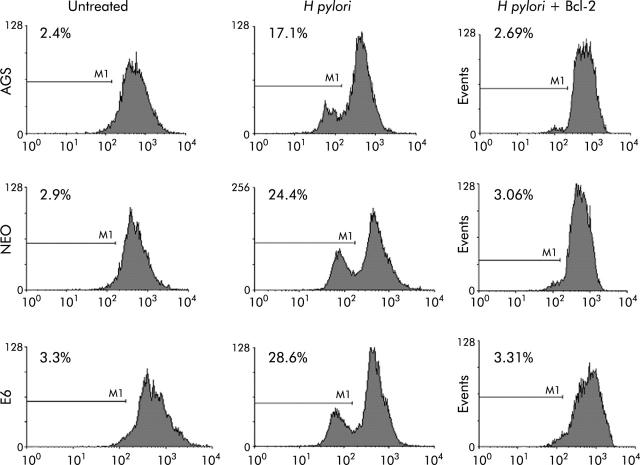Figure 3.
Loss of mitochondrial membrane potential (Δψm) occurred in gastric cells treated with Helicobacter pylori, and mitochondrial membrane potential loss was inhibited by forced Bcl-2 expression. AGS, AGS-E6 (E6), or AGS-neo (NEO) cells (1×106 cells/ml) were resuspended in 10 μg/ml tetramethylrhodamine (TMRE). After incubation, cells were immediately analysed by flow cytometry. Dead cells were excluded by forward and side scatter gating. Data were accumulated by analysing an average population of 20 000 cells. TMRE fluorescence was detectable in the PI channel (red fluorescence, emission at 590 nm). In parallel experiments AGS, AGS-E6, or AGS-neo cells transfected with Bcl-2 (to inhibit apoptosis) were stained as explained above. Loss of Δψm was quantified by flow cytometry analysis of untransfected cells versus Bcl-2 transfected gastric cells after H pylori treatment for the indicated time periods. Bcl-2 transfected cells exhibited a significantly reduced Δψm at four hours after H pylori treatment (p<0.05). In contrast, Bcl-2 transfected cells exhibited a much slower decline in membrane potential.

